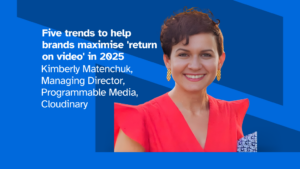By Ben Murphy, Managing Director UK, Quantcast
While the third-party cookie seems to be enjoying a surprise final act, we already know how the story will end. Google may have postponed their demise, but brands, agencies, publishers, and technology companies must stay focused on finding a long-term alternative. It’s not the moment to procrastinate; instead, we need to advance with technology and come up with new solutions today, to be ready when the day does arrive.
A much-needed reset
The relevancy of third-party cookies has been crumbling for years, initially due to ad-blockers and then due to content being consumed in apps rather than within browsers. More recently, changes in how browsers operate (with third-party cookies already blocked by Safari and Firefox, and Chrome coming next) have further sounded the death knell.
And rightfully so. The reality is that data collected from third-party cookies is often weeks, even months old. The source of this data is also often unknown, as someone collects it, classifies it, packages it, and then passes it on to one or more third parties. Its accuracy is therefore questionable, potentially misleading advertisers who rely on it for audience insights, campaign activation, and measurement.
Another element of this changing landscape is the growing pressure on governments around the world to create and enforce privacy regulations. Consumer awareness of the issue has never been higher, and privacy regulations are now in full force around the world, with the General Data Protection Regulation (GDPR) and the California Consumer Privacy Act (CCPA) chief among them. Many industry observers and participants also anticipate federal privacy legislation to one day come in the US. Other localities are actively pursuing regulations as well.
These new developments have magnified the need for a privacy-first approach. While there is some ambiguity associated with the various regulations, one thing is loud and clear: respecting consumer’s privacy and their choices will be a central consideration in the industry going forward.
That’s why we should welcome – and hasten – the deprecation of the third-party cookie. It’s an outdated solution for an internet that no longer exists. What the industry needs is a fresh approach – one that is based on industry standards, interoperability, and innovation – to empower a new era of digital advertising.
The multi-signal approach
Without third-party cookies, we will need a new mechanism that can serve audience planning, campaign activation, measurement, and attribution. Several industry consortiums and companies have already thrown a few proposals into the ring.
There won’t be a one-size-fits-all solution to the post-cookie world, and different methodologies will prioritize different technologies and types of data. However, I believe that the most comprehensive approach will combine a wide variety of “signals” – or real-time data inputs – from across the internet, including first-party data (with consumer consent where required), contextual approaches, cohorts, identifiers, and more.
AI and machine learning will play a key role in making sense of the wide-ranging data, by ingesting, understanding, and acting on this complexity. What’s more, real-time predictive modeling will help advertisers uncover forward-looking consumer intent, instead of dissecting backward-looking data for out-of-date insights. By automating much of the work, these new techniques will enable advertisers to scale their campaigns with ease.
This multi-signal, machine learning-driven approach is not only robust, but flexible as well. Piecing together information from broad sources increases precision, and it also prevents the industry from being overly reliant on any one signal.
When one door closes, another one opens
Instead of fearing the ever-changing, privacy-first world, we should embrace it, for necessity is the mother of invention. Already, pioneering technologies are helping us unlock new possibilities that are more efficient and effective than the traditional third-party cookie. The future of advertising has never looked more exciting, and I, for one, can’t wait for what lies ahead.









